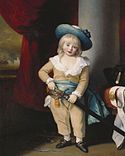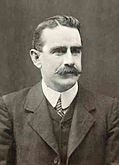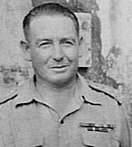Wikipedia:Today's featured article/December 2022
| << | Today's featured articles for December 2022 | >> | ||||
|---|---|---|---|---|---|---|
| Su | Mo | Tu | We | Th | Fr | Sa |
| 1 | 2 | 3 | ||||
| 4 | 5 | 6 | 7 | 8 | 9 | 10 |
| 11 | 12 | 13 | 14 | 15 | 16 | 17 |
| 18 | 19 | 20 | 21 | 22 | 23 | 24 |
| 25 | 26 | 27 | 28 | 29 | 30 | 31 |
December 1

Prince Octavius of Great Britain (1779–1783) was the thirteenth child and eighth son of King George III and his queen consort, Charlotte of Mecklenburg-Strelitz. King George and Queen Charlotte were much more involved in rearing their fifteen children than was usual for aristocratic parents of the time. George was extremely devoted to Octavius, who was too young to cause the kinds of trouble that his elder brothers did by this time. Contemporary accounts describe Octavius as having a sweet nature, and being particularly close to his sister Sophia. Six months after the death of his younger brother Prince Alfred, Octavius was inoculated against the smallpox virus. He became ill and died several days later. His death at the age of four devastated his parents, and in particular his father. King George III had been very fond of his two youngest sons, Alfred and Octavius, and his later bouts of madness involved hallucinations of the two dead princes. (Full article...)
December 2
Tropical Storm Zelda was the last tropical cyclone of the 1991 Pacific typhoon season. The area of low pressure that became Zelda formed near the International Date Line, and became a tropical depression on November 27, 1991. The Joint Typhoon Warning Center (JTWC) reported that it had reached tropical storm intensity near the Marshall Islands on November 28. According to the JTWC, the storm strengthened to 65 knots (120 km/h; 75 mph), equivalent to a Category 1 on the Saffir–Simpson hurricane wind scale, on November 29, and reached a peak of 80 kn (150 km/h; 90 mph). According to the Japan Meteorological Agency, it had a barometric pressure of 975 hectopascals (28.8 inHg). Zelda weakened into a tropical storm on December 2, and then a tropical depression two days later. It caused significant damage in the Marshall Islands, but no deaths or injuries were reported. Later in December, U.S. president George H. W. Bush declared the storm to be a major disaster, allowing the FEMA to assist. (Full article...)
December 3
Margarita with a Straw is a 2014 Indian Hindi-language drama film directed by Shonali Bose. It stars Kalki Koechlin (pictured) as an Indian teenager with cerebral palsy who relocates to America for her undergraduate education and comes of age following her complex relationship with a blind girl, played by Sayani Gupta. Revathi, Kuljeet Singh, and William Moseley play supporting roles. Produced by Bose in partnership with Viacom18 Motion Pictures, Margarita with a Straw was co-written by Bose and Nilesh Maniyar. The film deals with the concepts of sexuality, inclusion, self-love, and self-acceptance. Bose conceived the idea for the film in January 2011, during a conversation with Malini Chib—her cousin and a disability rights activist—about the latter's desire to have a normal sex life. After winning Sundance Institute's Mahindra Global Filmmaker Award for the draft, she modified the script to reflect her own perspective, incorporating several personal experiences into the narrative. (Full article...)
December 4
Lee Smith (born December 4, 1957) is an American former pitcher in professional baseball who played 18 years in Major League Baseball (MLB) for eight teams. A native of Jamestown, Louisiana, Smith was selected by the Chicago Cubs in the 1975 MLB draft. In 1991, he set a National League (NL) record with 47 saves for the St. Louis Cardinals, and was runner-up for the league's Cy Young Award; it was the second of three times Smith led the NL in saves, and he later led the American League in saves once. At his retirement, he held the major league record for career games finished (802) and was third in games pitched (1,022). He still holds the record for career saves for the Cubs (180) and held the same record for the Cardinals (160) until 2006. After his playing career, Smith worked as a pitching instructor in Minor League Baseball for the San Francisco Giants. He served as the pitching coach for the South Africa national baseball team in the World Baseball Classics of 2006 and 2009. (Full article...)
December 5
The 2006 Securitas depot robbery in Tonbridge, Kent, was the largest ever cash heist in the UK. Seven criminals stole almost £53 million in used and unused Bank of England sterling banknotes. After months of preparation, the gang abducted the manager and his family, then tricked their way inside the building (pictured) and tied up fourteen workers at gunpoint. Kent Police recovered over £19 million; by 2007, 36 people had been arrested in relation to the crime. At trial in London, five people were convicted and received long sentences, including the inside man, Emir Hysenaj. Lee Murray, the alleged mastermind of the heist, had fled to Morocco with his friend and accomplice Paul Allen. Murray successfully fought extradition to the UK and was eventually imprisoned for the robbery there instead. Allen was extradited and after a second trial in 2008 was jailed. A decade later, £32 million had not been recovered, and several suspects were still on the run. (Full article...)
December 6
Bill Denny (6 December 1872 – 2 May 1946) was a South Australian journalist, lawyer, Labor politician and decorated soldier who held a seat in the South Australian House of Assembly for 32 years. He was elected in 1900, re-elected in 1902, defeated in 1905, re-elected in 1906 and then retained his seat until defeated in 1933. Denny was the Attorney-General of South Australia in the Labor government of 1910–1912 led by John Verran. In August 1915, Denny enlisted in the First Australian Imperial Force to serve in World War I, initially as a trooper in the 9th Light Horse Regiment. After being commissioned in 1916, he served in the artillery on the Western Front. He was awarded the Military Cross for his actions when he was wounded while leading a convoy into forward areas near Ypres in September 1917. He was again Attorney-General in the governments led by John Gunn, Lionel Hill and Robert Richards. When Denny died in 1946 aged 73, he was accorded a state funeral. (Full article...)
December 7
During his three Olympic seasons, Yuzuru Hanyu (pictured), a Japanese figure skater, won two gold medals in the men's singles event, one each in 2014 and 2018. He also placed fourth in 2022. In 2014, at the age of 19, he became the first Asian men's singles skater to win an Olympic gold medal, and the youngest male skater to win the title since American Dick Button did in 1948. In 2018, Hanyu became the first male singles skater in 66 years to win gold medals in consecutive Winter Olympics since Button, who also won in 1952. Hanyu received the People's Honour Award from the Prime Minister of Japan as well as two Medals of Honor with Purple Ribbon. He also received the Kikuchi Kan Prize for his accomplishments, including his back-to-back Olympic titles. Two monuments in memory of his Olympic wins were erected at the International Center Station in Sendai, his hometown. He was also listed in ESPN's World Fame 100 and The Dominant 20, as well as Forbes 30 Under 30 Asia for his success in 2018. (Full article...)
December 8

Allied logistics in the Southern France campaign played a key role in the success of Operation Dragoon, the Allied invasion of southern France during World War II. The US Seventh Army landed on the French Riviera on 15 August 1944. Its primary objective was to capture the ports of Marseille and Toulon, then drive northward up the Rhône valley. Both ports were captured, but badly damaged, so considerable effort was required to bring them into service. Priority was given to ammunition during combat loading, anticipating stubborn German resistance. When this proved to not be the case, ammunition had to be moved out of the way to reach other materiel, which slowed unloading. To facilitate the advance, engineers repaired bridges, rehabilitated railways and laid pipelines. The Seventh Army continued to draw its supplies from the North African Theater of Operations until the Southern Line of Communications was merged with the Communications Zone of the European Theater of Operations on 20 November. (Full article...)
December 9
Nadezhda Alliluyeva (1901–1932), also known as Nadya or Nadia, was the second wife of Soviet leader Joseph Stalin. She was born in Baku to a friend of Stalin, a fellow revolutionary, and was raised in Saint Petersburg. Alliluyeva was exposed to revolutionary activity throughout her youth. Having known Stalin from a young age, she married him when she was 18, and they had two children. Alliluyeva worked as a secretary for Bolshevik leaders, including Vladimir Lenin and Stalin, and also as an assistant in the Department of Agitation and Propaganda, before enrolling at the Industrial Academy in Moscow to study synthetic fibres and become an engineer. She had health issues, which had an adverse impact on her relationship with Stalin. She also suspected he was unfaithful, which led to frequent arguments with him. On several occasions, Alliluyeva reportedly contemplated leaving Stalin. After an argument she shot herself early in the morning of 9 November 1932. (Full article...)
December 10
The Low Memorial Library is a building at the center of Columbia University's Morningside Heights campus in Manhattan, New York City, United States. Designed by Charles Follen McKim of the firm McKim, Mead & White, the building was constructed between 1895 and 1897 as the central library of Columbia's library system. Columbia University president Seth Low funded the building and named it in memory of his father, Abiel Abbot Low. Its facade and interior are New York City designated landmarks, and the building is also a National Historic Landmark. Low is shaped like a Greek cross and is four stories tall, excluding a ground-level basement. The first floor contains an ambulatory around an octagonal rotunda. The stacks had space for 1.5 million volumes. The building was poorly suited for library use, but its central location made it a focal point of the university's campus. Following the completion of the much larger Butler Library in 1934, Low was converted to administrative offices. (Full article...)
December 11
Apollo 17 (December 7–19, 1972) was the final mission of NASA's Apollo program, with, on December 11, the most recent crewed lunar landing. Commander Gene Cernan (pictured) and Lunar Module Pilot Harrison Schmitt walked on the Moon, while Command Module Pilot Ronald Evans orbited above. Under pressure to send a scientist to the Moon, NASA replaced Joe Engle with Schmitt, who became the only professional geologist to land on the Moon. Mission planners sought a site shaped by volcanism, and selected Taurus–Littrow, where apparently-volcanic features had been seen. The mission lifted off early on December 7 after the only launch-pad delay in the Apollo program. Cernan and Schmitt landed and completed three moonwalks, taking lunar samples and deploying scientific instruments. Orange soil discovered at Shorty crater proved to be volcanic in origin from early in the Moon's history. The command module, which also contained a biological experiment with five mice, returned to Earth on December 19. (Full article...)
December 12

Gurl.com was a US website for teenage girls that was online from 1996 to 2018. It was created by Rebecca Odes, Esther Drill, and Heather McDonald as a resource centered on teen advice, body image, sexuality, and other teen concerns. First published as an online zine, it expanded into an online community. It was purchased in turn by Delia's, iVillage, PriMedia, and what became Defy Media. It ceased activity after Defy Media's closure in 2018 and was redirected to Seventeen's website. In the US, Gurl.com was heavily associated with zine culture and third-wave feminism and was used in academia to study the online behavior of teenage girls. Known for its humorous tone and unconventional approach to teen-related topics, it won an award from I.D. magazine in 1997 and a Webby in 1998; its founders received awards from New York magazine in 1997. Gurl.com attracted privacy concerns, and criticism from conservative and anti-pornography advocates for its sex-positive stance and sex education resources. (Full article...)
December 13
CSS Baltic was a casemate ironclad that served in the Confederate States Navy during the American Civil War. A towboat and cotton lighter before the war, she was purchased by the state of Alabama in December 1861 for conversion into an ironclad. After being transferred to the Confederate Navy in May 1862, she served on Mobile Bay off the Gulf of Mexico. Her condition in Confederate service was such that naval historian William N. Still Jr. has described her as "a nondescript vessel in many ways". Over the next two years, parts of the ship's wooden structure were affected by wood rot. Her armor was removed to be put onto the ironclad CSS Nashville in 1864. By that August, Baltic had been decommissioned. She was taken up the Tombigbee River near the end of the war, where she was captured by Union forces on May 10, 1865. An inspection the next month found that her upper hull and deck were rotten and that her boilers were unsafe. She was sold on December 31, and was likely broken up in 1866. (Full article...)
December 14
The mandrill (Mandrillus sphinx) is a large Old World monkey native to west-central Africa. It is one of the most colorful mammals in the world, with red and blue skin on its face and posterior. The species is sexually dimorphic, as males have a larger body, longer canine teeth and brighter coloring. Mandrills mainly live in tropical rainforests but will also travel across savannas. They live in large, stable groups known as "hordes" which can contain hundreds of individuals. Females form the core of these groups, while adult males are solitary and only reunite with the larger groups during the breeding season. Dominant males have the most vibrant colors and fattest flanks and rumps. The mandrill is classified as vulnerable on the IUCN Red List. Its biggest threats are habitat destruction and hunting for bushmeat. Gabon is considered the stronghold for the species. Its habitat has declined in Cameroon and Equatorial Guinea, while its range in the Republic of the Congo is limited. (Full article...)
December 15
John Sherman (1823–1900) was an American congressman and senator from Ohio during the second half of the nineteenth century. The brother of General William Tecumseh Sherman, he was the principal author of the Sherman Antitrust Act of 1890. As a Republican senator, he worked on legislation to restore the nation's credit abroad and produce a stable, gold-backed currency at home. Serving as Secretary of the Treasury under President Rutherford B. Hayes, Sherman helped to end wartime inflationary measures and to oversee the law allowing dollars to be redeemed for gold. He returned to the Senate after his term ended, continuing his work on financial legislation, as well as laws on immigration, business competition, and interstate commerce. In 1897, he was appointed Secretary of State by President William McKinley, but due to failing health, retired in 1898 at the start of the Spanish–American War. (This article is part of a featured topic: 1880 United States presidential election.)
December 16
Tom Eastick (3 May 1900 – 16 December 1988) was a senior Australian Army artillery officer during World War II, a post-war leader of the principal ex-service organisation in South Australia, and a justice of the peace. He commanded a field artillery regiment during the First and Second Battles of El Alamein in the Western Desert campaign in North Africa in 1942, leading to his appointment as a Companion of the Distinguished Service Order and an Efficiency Decoration award. He then commanded divisional artillery during several campaigns in New Guinea and Borneo, before being appointed military governor of the Raj of Sarawak after taking the Japanese surrender at Kuching. Post-war, he was state president of the Returned Sailors', Soldiers' and Airmen's Imperial League of Australia (the Returned & Services League from 1965) for fifteen years. He was appointed a Companion of the Order of St Michael and St George and knighted for his volunteer work on behalf of ex-servicemen. (Full article...)
December 17
Happier Than Ever: A Love Letter to Los Angeles is a 2021 American concert film directed by Robert Rodriguez and Patrick Osborne. It stars singer-songwriter Billie Eilish (pictured), who performs all 16 tracks from her second studio album, Happier Than Ever, at Los Angeles's Hollywood Bowl. Inspired by Who Framed Roger Rabbit (1988) and Cool World (1992), the film blends live action with animation; its animated scenes combine motion capture footage of Eilish with rotoscoping by Osborne. Principal photography at the Hollywood Bowl took place for one week and without a live audience due to the COVID-19 pandemic. Lacking a crowd, the crew recorded Eilish from very close distances, aiming to create a sense of intimacy between her and the viewers. The film, released exclusively to Disney+ in September 2021, was praised by critics for its performances, animation style, and cinematography. It received nominations for multiple awards, such as Best Music Film at the 2022 Grammy Awards. (Full article...)
December 18
The 2014 FIFA World Cup Final was the final match of the 2014 World Cup. The match between Germany and Argentina was played at the Maracanã Stadium in Rio de Janeiro, Brazil, on 13 July 2014. With the match goalless after 90 minutes, it went to extra time, in the second period of which Germany broke the deadlock. Mario Götze, who had come on as a substitute shortly before the end of normal time, received André Schürrle's cross from the left on his chest before volleying a left-footed shot (pictured) into the net to secure a 1–0 victory for Germany. Their win was their fourth World Cup title and the first since German reunification, as well as the first World Cup win by a European team in the Americas. Götze was named the man of the match, and Argentina's Lionel Messi was awarded the Golden Ball as FIFA's outstanding player of the tournament. Joachim Löw, Germany's manager, labelled his side's win as the culmination of a project that had begun ten years previously under his predecessor Jürgen Klinsmann. (Full article...)
December 19
The battle of Adys was fought in late 255 BC during the First Punic War between a Roman army led by Marcus Atilius Regulus and a Carthaginian army jointly commanded by Bostar, Hamilcar and Hasdrubal. The Romans had successfully invaded Carthage's homeland in North Africa and left Regulus with 15,500 men to hold their lodgement over the winter. Regulus advanced on and besieged the city of Adys. The Carthaginian army established itself on a rocky hill nearby. Regulus had his forces execute night marches to launch dawn assaults on the Carthaginians' fortified hilltop camp. One part of the Roman force was repulsed and pursued down the hill. After the other part charged the pursuing Carthaginians in the rear and routed them, the remaining Carthaginians panicked and fled. Despairing, the Carthaginians sued for peace, but the terms Regulus offered were so harsh that they resolved to fight on. A few months later at the battle of Tunis Regulus was decisively beaten. (Full article...)
December 20
The Réunion swamphen (Porphyrio caerulescens) is a hypothetical extinct species of rail that was endemic to the Mascarene island of Réunion. While only known from accounts by visitors from the 17th and 18th centuries, it was scientifically named in 1848 based on a 1674 account by Sieur Dubois. The Réunion swamphen was described as entirely blue in plumage with a red beak and legs; the size of a Réunion ibis, which could mean 65 to 70 cm (26 to 28 in) in length; and possibly similar to the takahē. While easily hunted, it was a fast runner and able to fly. It may have fed on plant matter and invertebrates, and was said to nest among grasses and aquatic ferns. It was only found on the Plaine des Cafres plateau, to which it may have retreated during the latter part of its existence, whereas other swamphens inhabit lowland swamps. While the last unequivocal account is from 1730, the bird may have survived until 1763. Overhunting and the introduction of cats probably drove it to extinction. (Full article...)
December 21
SS Politician was a cargo ship that ran aground off the coast of the Hebridean island of Eriskay (pictured) in February 1941. During the Second World War the ship participated in the Atlantic convoys between the United Kingdom and the United States. She grounded while attempting to rendezvous with a convoy to the north of Scotland. No one was badly injured or killed in the accident. Her cargo included 22,000 cases of malt whisky and £3 million worth of Jamaican banknotes. Much of the whisky was recovered by islanders from across the Hebrides, contrary to marine salvage laws. Because no duty had been paid on the whisky, members of HM Customs and Excise pursued and prosecuted those who had removed the cargo. Customs men undertook raids, arresting many and seizing the boats of those suspected of taking part. The story of the wreck and looting was the basis for the book Whisky Galore; an adaptation was released as a film in 1949 and a remake in 2016. (Full article...)
December 22
"Like I'm Gonna Lose You" is a song by American singer-songwriter Meghan Trainor (pictured) from her debut major-label studio album Title (2015), featuring guest vocals from singer John Legend. Trainor wrote the song with Justin Weaver and Caitlyn Smith, and produced it with Chris Gelbuda. Epic Records released it as the album's fourth single on June 23, 2015. A soul love ballad, "Like I'm Gonna Lose You" is about savoring moments spent with loved ones and not taking them for granted. Critics praised Trainor's vocals and the song's composition, but some thought its subdued style did not suit her. It reached number one in Australia, New Zealand, and Poland, and number eight in the US. It was certified 4× Platinum in the US and 5× Platinum in Australia and Canada. The music video depicts Trainor singing on a rainy night while people in diverse relationships interact with loved ones. Trainor performed the song on television shows and her concert tours. (This article is part of a featured topic: Title (album).)
December 23
Blast Corps is a 1997 action video game for the Nintendo 64 (pictured). In the game, the player uses vehicles to destroy buildings in the path of a runaway nuclear missile carrier. In the game's 57 levels, the player solves puzzles by moving objects and bridging gaps with the vehicles. Blast Corps was developed at Rare by a small team of recent graduates over the course of a year. They were inspired, in part, by the puzzle elements of Donkey Kong '94. Nintendo published and released Blast Corps to critical acclaim in March 1997 in Japan and North America. Its European and Australian release followed on December 22. The game received several editor's choice awards and Metacritic's second-highest Nintendo 64 rating of 1997. It sold about a million copies, below the team's expectations. Reviewers praised the game's originality, variety, and graphics, but some critiqued its controls and repetition. Reviewers of the 2015 Rare Replay retrospective compilation noted Blast Corps as a standout title. (Full article...)
December 24
Francis Neale (1756–1837) was an American Catholic priest and Jesuit in Washington, D.C., and Maryland. He played a substantial role in the Jesuit order's restoration in the US. Born in Maryland, Neale was educated and ordained a priest at the Colleges of Bruges and Liège. When he returned to the US in 1788, he became the pastor at St. Thomas Manor, where he opposed Bishop John Carroll's founding of Georgetown College. In 1790, Neale oversaw the establishment of Holy Trinity, the first Catholic church in Washington, D.C. He established the Church of St. Mary in Alexandria, Virginia, and became the president of Georgetown College in 1809. The number of students declined dramatically due to his implementation of strict monastic discipline. Neale joined the Jesuit order when it was restored in 1806. He became the novice master at Georgetown and treasurer of the Jesuits' Maryland mission. He spent his later years as the spiritual director to the nuns at the Georgetown Visitation Monastery. (Full article...)
December 25
Singin' and Swingin' and Gettin' Merry like Christmas is the third book of a seven-volume autobiography series by Maya Angelou (pictured). Set between 1949 and 1955, the book largely spans her twenties. Angelou describes her struggles to support her young son, form relationships, and forge a career in entertainment. Its 1976 publication was the first time an African-American woman had expanded her life story into a third volume. It was described as "a graphic portrait of the adult self in bloom" and "a journey of discovery and rebirth". In the book, Angelou examines many of the same subjects and themes in her previous autobiographies, including travel, music, race, conflict, and motherhood. She depicts the conflict she felt as a single mother, despite her success as a performer as she travels Europe with the musical Porgy and Bess. Her depictions of her travels, which take up 40 percent of the book, have roots in the African-American slave narrative. (This article is part of a featured topic: Maya Angelou autobiographies.)
December 26
Between 1952 and 1954, John Raymond published three science fiction magazines and a fantasy magazine. Raymond, an American publisher of men's magazines who knew little about science fiction, hired Lester del Rey to edit the digest-size magazines. Space Science Fiction and Science Fiction Adventures appeared in 1952, followed by Rocket Stories, which targeted a younger audience, and Fantasy Magazine (pictured), which published fantasy rather than science fiction. All four were profitable, but Raymond did not reinvest the profits into the magazines, and paid contributors late. When del Rey discovered that Raymond was planning to cut rates, he resigned. Two of the magazines continued briefly with Harry Harrison as editor, but all ceased publication by the end of 1954. The magazines are well-regarded by science fiction historians, and carried fiction by many writers well known in the field, or who would later become famous, including Isaac Asimov, Philip K. Dick, Robert E. Howard, and John Jakes. (Full article...)
December 27
Aliens is a 1986 science fiction action film written and directed by James Cameron. Set in the far future, it is the sequel to the 1979 science fiction horror film Alien, and the second film in the Alien franchise. Sigourney Weaver (pictured) stars as Ellen Ripley, sole survivor of an alien attack on her ship, with Michael Biehn, Paul Reiser, Lance Henriksen, and Carrie Henn in supporting roles. Aliens was released on July 18, 1986, to critical acclaim with Weaver's performance garnering consistent praise. The film received several awards and nominations, including an Academy Award nomination for Best Actress for Weaver at a time when the science fiction genre was generally overlooked. Aliens was one of the highest-grossing films of 1986 worldwide, earning $131.1 to 183.3 million during its theatrical run. Aliens is now considered among the greatest films of the 1980s, and among the best science fiction, action, and sequel films ever made. (Full article...)
December 28
The Battle of Van Buren was fought at Van Buren, Arkansas, on December 28, 1862, during the American Civil War. After winning the Battle of Prairie Grove on December 7, Union brigadier generals James G. Blunt (pictured) and Francis J. Herron prepared for a raid against the Confederate positions at Van Buren and Fort Smith. The Union troops struck an outlying Confederate cavalry unit north of Van Buren the morning of December 28. The Confederate cavalry fled to Van Buren, which was then overrun by Union troops. The Union pursued and captured three steamboats, Confederate troops, and many supplies; two more steamboats and more supplies were destroyed by the Confederates. An artillery duel occurred at Van Buren and there was minor skirmishing further downriver after nightfall. After the battle, Confederate major general Thomas C. Hindman withdrew his men to Little Rock and the Union force returned from the raid. The battles of Prairie Grove and Van Buren broke Confederate strength in the region. (Full article...)
December 29

Operation Grandslam was an offensive undertaken by United Nations peacekeeping forces from 28 December 1962 to 15 January 1963 against the gendarmerie of the State of Katanga, which was rebelling against the Republic of the Congo in central Africa. Katanga's leader, Moïse Tshombe, repeatedly violated agreements he had made with the UN and the Congolese government. The UN Operation in the Congo became increasingly impatient towards Tshombe and drew up plans to resolve the situation through force. In December 1962 Katangese gendarmes attacked UN peacekeepers, and U Thant, Secretary-General of the UN, authorised an offensive. UN forces secured the Katangese capital, Élisabethville, and destroyed much of the Katangese Air Force in December 1962. In early January Indian peacekeepers exceeded their orders and crossed the Lufira River ahead of schedule, generating panic behind the Katangese lines. The Katangese forces were decisively defeated and Katanga was forcibly reintegrated into the Congo. (Full article...)
December 30

U.S. Highway 8 runs east–west for 280 miles (451 km), mostly within the state of Wisconsin. It connects Interstate 35 in Forest Lake, Minnesota, to U.S. Highway 2 at Norway in the Upper Peninsula of Michigan. Except for some short freeway segments, it is mostly undivided surface road. It is maintained by the departments of transportation of Minnesota, Wisconsin and Michigan. Part of the U.S. Highway System, it was commissioned on November 11, 1926, running between Forest Lake and Pembine, Wisconsin, with a planned continuation to Powers, Michigan. The western end was extended to Minneapolis, but the terminus was later moved back to Forest Lake. The eastern terminus was changed from Powers to Norway. The Wisconsin Department of Transportation built a bypass around Rhinelander in the 1990s and created a locally maintained business loop along the old highway through the central business district. The signage for the loop was removed in 2005. (This article is part of a featured topic: U.S. Highways in Michigan.)
December 31
John Hay (1838–1905) was an American statesman and official whose career in government stretched over almost half a century. After graduation from Brown University in 1858, Hay read law in his uncle's office in Springfield, Illinois, adjacent to that of Abraham Lincoln. Hay worked for Lincoln's successful presidential campaign, and became his assistant private secretary. Through the American Civil War, Hay was close to Lincoln, and stood by his deathbed after Lincoln was shot at Ford's Theatre. In 1897, President William McKinley made him the ambassador to Britain. The following year, Hay became the U.S. secretary of state. He served almost seven years, first under McKinley before his assassination, and then under Theodore Roosevelt. Hay was responsible for the Open Door Policy in China. To clear the way for the building of the Panama Canal, he negotiated the 1901 Hay–Pauncefote Treaty with the United Kingdom, the 1903 Hay–Herrán Treaty with Colombia, and the 1903 Hay–Bunau-Varilla Treaty with Panama. (Full article...)

























